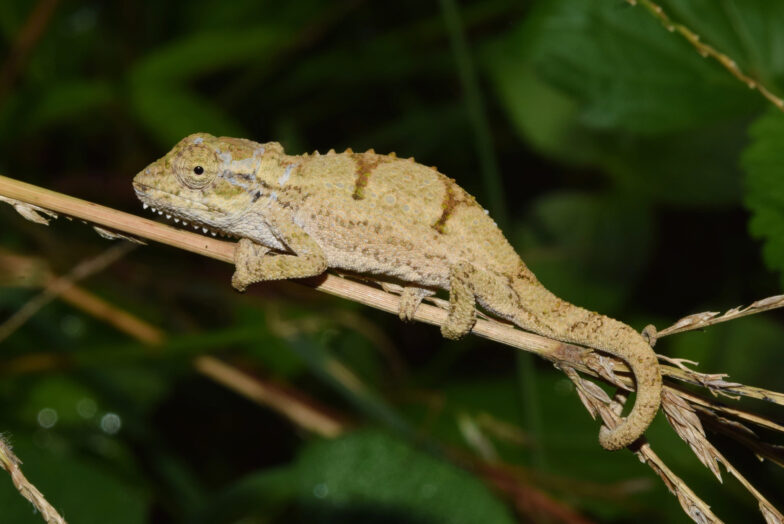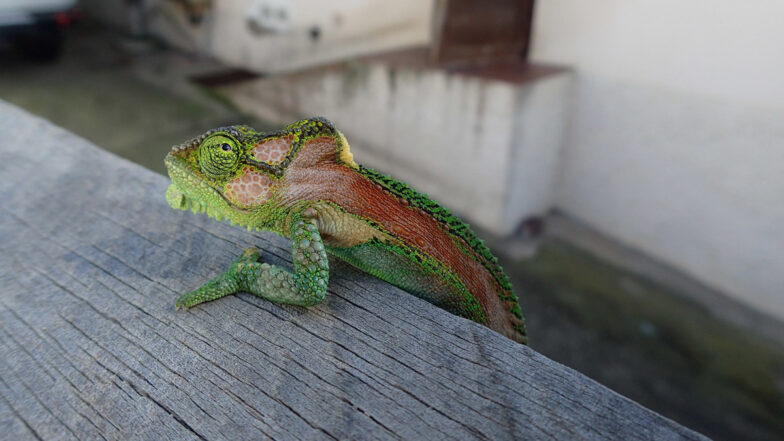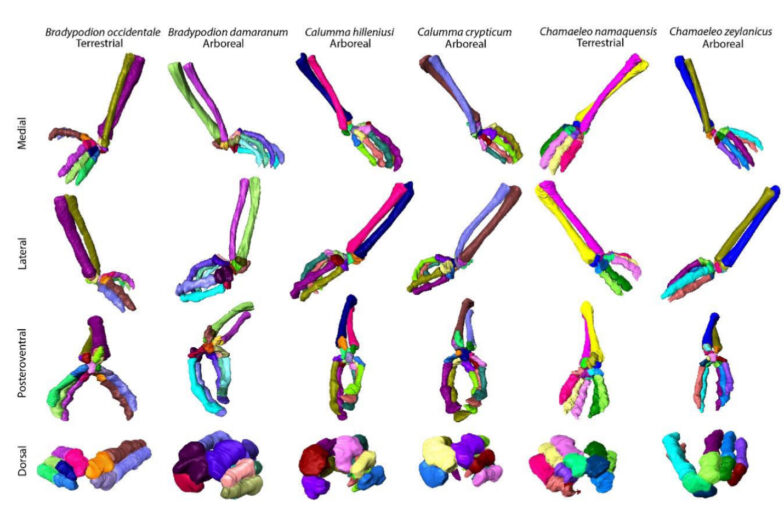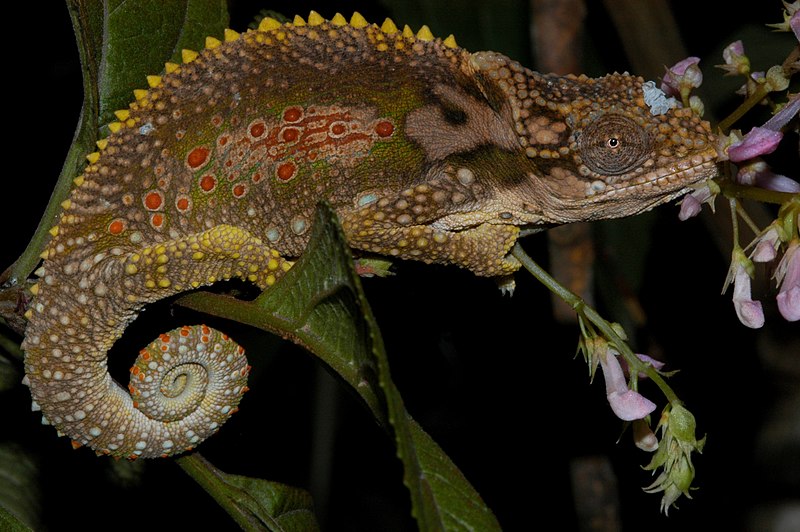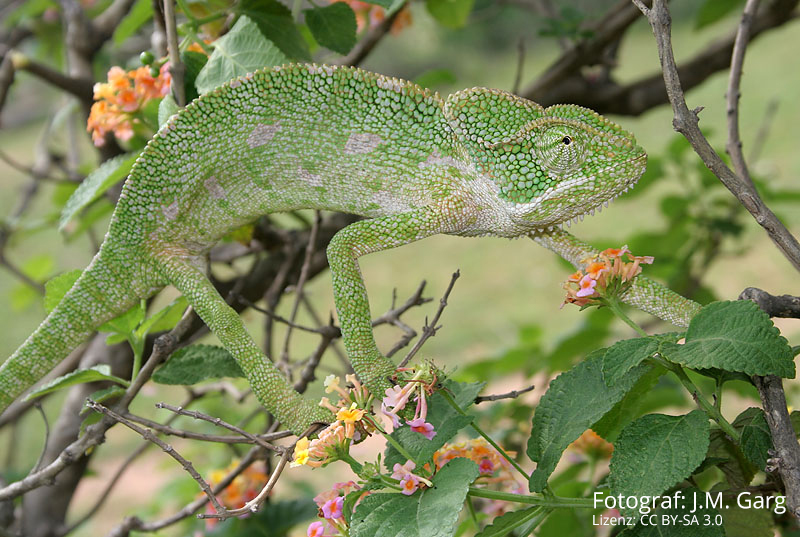Dwarf chameleons of the genus Bradypodion from South Africa have long been known to adapt very well to urban habitats. Two scientists from Cape Town and Johannesburg have now investigated how different populations differ in body size, body weight and body condition score within urban and natural environments.
A total of 1107 individuals of five different dwarf chameleon species were studied over a period of four years. Bradypodion damaranum in George (Western Cape), Bradypodion melanocephalum in Durban (KwaZulu-Natal), Bradypodion setaroi in St Lucia (KwaZulu-Natal), Bradypodion thamnobates in Howick (KwaZulu-Natal) and Bradypodion ventrale in Jeffrey’s Bay (Eastern Cape) were each searched at night at three to eight locations. Forest fragments, grass savannahs or coastal bushland less than 15 km from the centre of the nearest town were classified as ‘natural sites’. All sites located within a city and consisting of both introduced and native flora regularly cut back by humans (gardens, public parks and green spaces, roadsides) were categorised as ‘urban’. The dwarf chameleons found were measured, weighed, sexed and marked with a felt-tip pen to avoid duplicate measurements on the same animals. Obviously pregnant females were not measured.
Statistical analyses and comparisons revealed that the chameleons at natural sites were always smaller and lighter on average than the populations of the same species at urban sites. Significantly larger and heavier in the city were both sexes in Bradypodion damaranum, the males in Bradypodion melanocephalum, ventrale and setaroi and the females in Bradypodion thamnobates. The body condition score was higher in urban areas for both sexes of Bradypodion damaranum and setaroi and males of Bradypodion melanocephalum than for the chameleons in natural habitats. In Bradypodion ventrale and thamnobates, there were no differences in body condition score between the different populations.
Research into exactly how these exciting differences come about is still pending.
Big cities, big bodies: urbanisation correlates with large body sizes and enhanced body condition in African dwarf chameleons (Genus: Bradypodion)
Jody M. Barends, Krystal A. Tolley
African Zoology 2024, 59(3)
DOI: 10.1080/15627020.2024.2402256
Photo: Bradypodion melanocephalum, photographed by suncana, licence Creative Commons Attribution 4.0 International

